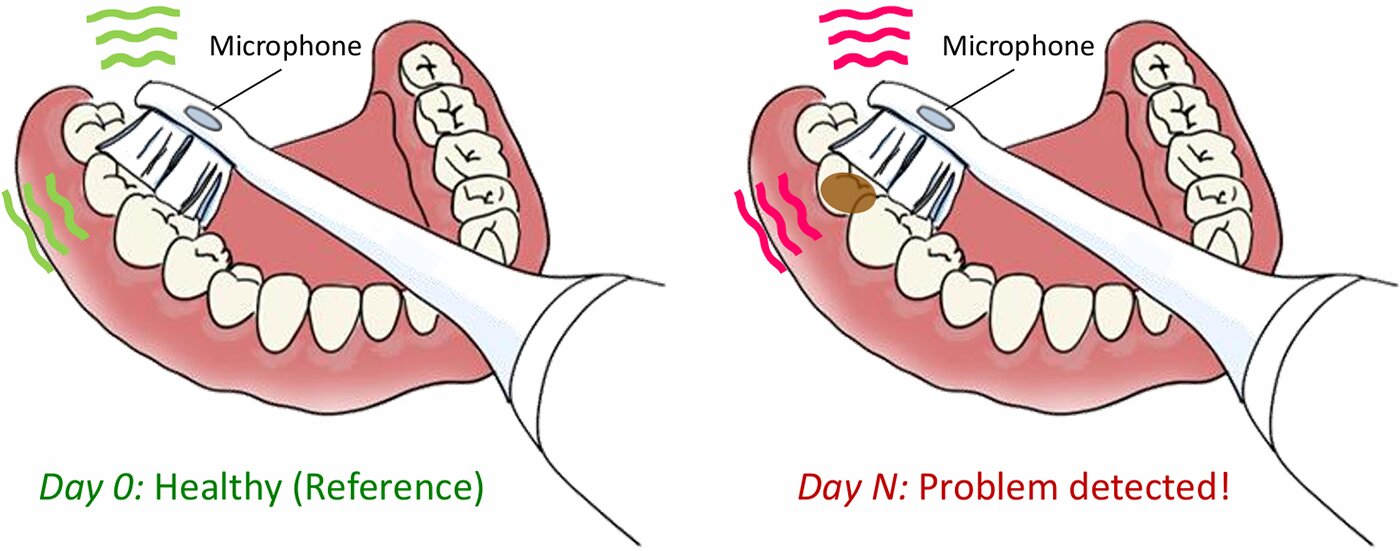
Dental hygiene is an important component to the overall health of a person. Early detection of dental disease is crucial in preventing adverse outcomes. While X-rays are currently the most accurate gold standard for dental disease detection, they are not accessible to many around the world.
Carnegie Mellon College of Engineering researchers have teamed up with the University of Pittsburgh School of Dental Medicine to create a dental health sensing system that uses off-the-shelf electric toothbrushes for dental condition detection. The work is published in the journal Proceedings of the ACM on Interactive, Mobile, Wearable and Ubiquitous Technologies.
According to the Centers for Disease Control, as of 2024, approximately 57 million Americans live in a dental health professional shortage area and about 67% of those shortage areas are in rural communities. By offering an electric toothbrush that can perform at-home dental self-examinations, the hope is to provide dental care to millions of people who would otherwise not receive it.
The ToMoBrush (Tooth Monitoring Brush / Tomorrow’s Toothbrush) explores the potential of using an off-the-shelf electric toothbrush with minimal hardware modification for dental health sensing to enable regular, at-home dental self-examinations.
Rather than viewing a toothbrush purely as a cleaning instrument, ToMoBrush leverages the fact that an electric toothbrush emits acoustic signals that are generated by rapid automatic bristle vibrations. When the brush is in contact with a tooth, the tooth also vibrates along with the toothbrush and produces distinct acoustic signals depending on the condition of each tooth.
“Dental disease is a major public health challenge that can cause pain and infections, which may lead to problems with eating, speaking, and even social interaction,” explains Kuang Yuan, a Ph.D. student in electrical and computer engineering. “We explored a low-cost solution for dental health monitoring that patients can use regularly in the comfort of their homes.”

The team further developed a data-driven signal processing pipeline to detect and discriminate different dental conditions, such as cavities, plaque, and food impaction, as well as variations in electric toothbrushes, such as brand, battery charge, and bristle formation. To tackle these variables, the team modeled the vibration system including toothbrush, tooth resonance, as well as brushing strength and movement.
In their paper, the researchers propose an algorithm to separate these different factors and extract clean tooth resonance signatures based on a key observation. Though these factors share the same frequency band, their rates of change across the frequencies are different. By adapting a technique that is widely used in speech processing to separate the glottal excitation and vocal tract resonances, the team proposes converting the signal into the cepstrum domain where these distinct behaviors are easily separable.
“After obtaining the tooth resonance signature, we further developed a feature selection algorithm to select specific regions of signature that are specialized for detecting three different dental conditions,” explains Yuan. “We can perform health detection by comparing the signatures with prior healthy reference measurements.”
The team believes such a system can supplement the dental health care system, even for those with access to professional dental care, by providing early warnings of potential issues in between the dental visits.
Yuan will present the team’s findings at the 2024 Pervasive and Ubiquitous Computing / International Symposium on Wearable Computing (UbiComp/ISWC) in Melbourne, Australia.
More information:
Kuang Yuan et al, ToMoBrush: Exploring Dental Health Sensing Using a Sonic Toothbrush, Proceedings of the ACM on Interactive, Mobile, Wearable and Ubiquitous Technologies (2024). DOI: 10.1145/3678505
Citation:
Exploring dental health sensing using a sonic toothbrush (2024, October 8)
retrieved 8 October 2024
from https://medicalxpress.com/news/2024-10-exploring-dental-health-sonic-toothbrush.html
This document is subject to copyright. Apart from any fair dealing for the purpose of private study or research, no
part may be reproduced without the written permission. The content is provided for information purposes only.



